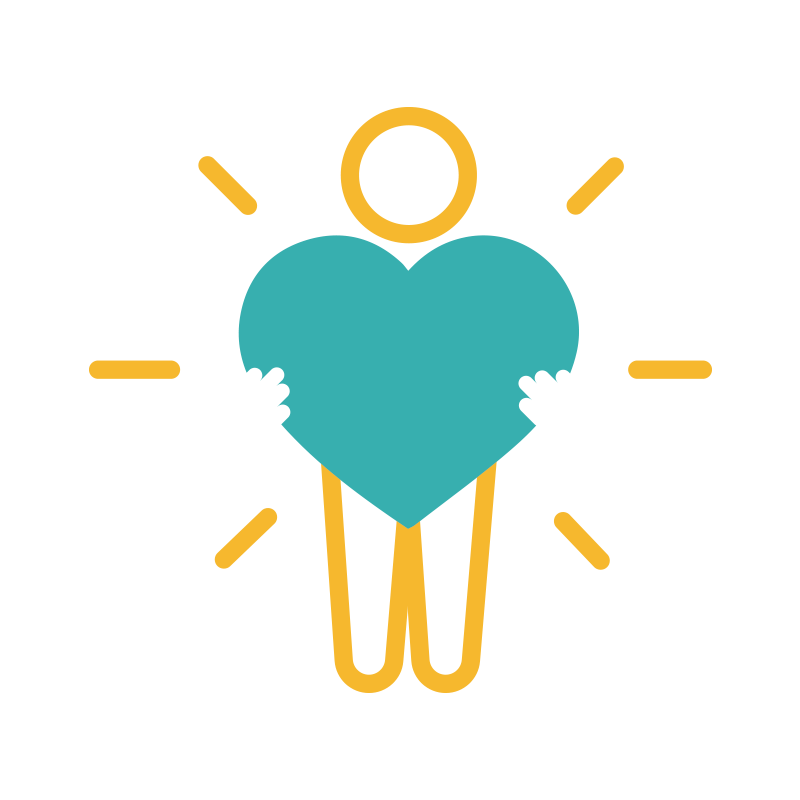Statistics
If you’ve been the victim of sexual assault, know that you’re not alone. The following are some statistics that give some perspective to the scope of sexual assault crimes.
Characteristics of sexual assault
- In 2016, there were 42.1 reported offenses of rape per 100,000 residents for the state of Hawai'i’s total index crimes (Fuatagavi & Perrone, 2017).
- 19% of American women and 2% of men have been raped during their lifetimes (Breiding, Smith, Basile, Walters, Chen & Merrick, 2014).
- 1 in 3 women and 1 in 8 men have experienced non-contact unwanted sexual violence (Center for Disease Control & Prevention, 2012).
- Half of multi-racial women, 45.6% of American Indian/Alaska Native women, 38.9% of Caucasian women, 35.5% of African-American women, 26.9% of Hispanic women, and 22.9% of Asian/Pacific Islander women have experienced unwanted touching and/or penetration during their lifetime (Center for Disease Control & Prevention, 2012).
- The majority of sexual violence victims are female. From 1995 - 2010, 9% of rapes or sexual assaults involved a male victim (Planty, 2013).
- Close to 8 out of 10 sexual assaults were perpetrated by the victim’s family member, intimate partner, friend or acquaintance (Planty 2013).
- Of the women who were victims of completed or attempted rape, 50% of the perpetrators were the woman’s intimate partner (Center for Disease Control & Prevention, 2012).
- 86% of male victims of completed or attempted rape reported only male perpetrators (Center for Disease Control & Prevention, 2012).
- Weapons were involved in only 11% of rape or sexual assault victimizations (Planty, 2013).
- Approximately 1 out of 2 sexual assaults occur at or near the victim’s home (Planty, 2013).

Approximately 1 out of 2 sexual assaults occur at or near the victim’s home.
Planty, 2013
Impact of victimizations
- Sexual violence victimization is associated with multiple negative health behaviors, including substance abuse, physical inactivity, binge drinking, suicidal thoughts, and smoking (Watson-Johnson, Townsend, Basile & Richardson, 2012).
- Women who experience sexual violence are at a higher risk for suffering from physical health problems, such as gastrointestinal disorders, chronic pain, reproductive system disorders, obesity, diabetes, autoimmune disorders and infectious diseases (Vivolo, Holland, Teten & Holt, 2010; Waechter & Ma, 2015).
- Teens who experience sexual violence can exhibit a number of social and health risk behaviors such as less contact with friends and relatives, strained interpersonal relationships, early sexual initiation, substance abuse, and failure to engage in safety behaviors, such as using a seat belt (Center for Disease Control & Prevention, 2017).
- Male and female victims of sexual violence report lower levels of social and emotional support, life satisfaction and poorer overall health status (Watson-Johnson et al., 2012).
- The economic costs of rape and attempted rape in the U.S. are over $900 billion each year, 4 times the amount for cancer and 20 times the amount for HIV/AIDS. Despite the high costs, only 0.001% of funding for the National Institutes of Health (NIH) went to sexual violence prevention (Waechter & Ma, 2015).
- Health care costs for women who were sexually abused as children are 16% higher than women without a history of childhood sexual abuse (National Coalition to Prevent Child Sexual Abuse and Exploitation of Children, 2012).

Male and female victims of sexual violence report lower levels of social and emotional support, life satisfaction and poorer overall health status.
Watson-Johnson et al., 2012
Children and teens
- Approximately one-third of female victims of rape experienced it for the first time between the ages of 11 and 17, and 1 in 9 reported experiencing it before age 10 (Center for Disease Control & Prevention, 2012).
- Women with a childhood history of rape are more than three times more likely to experience rape again as an adult, compared to women without a childhood rape history (Center for Disease Control & Prevention, 2012).
- There are over 5 million unique images of child sexual abuse, often referred to as child pornography, on the internet (Martin, 2016).
- Studies suggest that the time of greatest vulnerability to experience childhood sexual abuse is between the ages of 8 and 12 (Rickerby, 2013).
- Approximately 25% of people who abuse children are under the age of 18 (National Sexual Violence Resource Center, 2011).
- According to the 2015 Youth Risk Behavioral Survey (YRBS), nearly 9% of Hawai‘i high school students report being physically forced to have sex. In addition, nearly 13% had experienced sexual violence in the past 12 month by someone they were dating or going out with (Center for Disease Control & Prevention, 2015).
- 44% (52% of girls and 35% of boys) of students in grades 7-12 reported that they had been sexually harassed in person and 30% (36% of girls and 24% of boys) reported that they had been sexually harassed online (American Association of University Women, 2011).
- 11% of teenagers and young adults report sharing a naked picture of themselves online or through a text message, commonly referred to as “sexting”. Shockingly, only 26% of those who shared a naked picture of themselves think that the receiver did not share the picture with anyone else (Lenhart, 2015).

11% of teenagers and young adults report sharing a naked picture of themselves online or through a text message, commonly referred to as “sexting”.
Lenhart, 2015
College students
- Among female victims of completed rape, approximately 28% experience rape between the ages of 18 and 25 (Breiding et al., 2014).
- Among male victims who were made to penetrate an offender, 50% experienced the rape between the ages of 18 and 25 (Breiding et al., 2014).
- 9.3% of all University of Hawai‘i (UH) students reported experiencing sexual harassment both on & off campus at any time while enrolled at UH. The most common types of sexual harassment included: sexual remarks or insulting/offensive jokes or stories (7.2%) & inappropriate comments regarding body, appearance, or sexual activity (7.2%) (The University of Hawai'i System Office of Institutional Equity, 2018).
- 6.3% of all UH students reported experiencing nonconsensual sexual contact both on & off campus at any time while enrolled at UH, 2.4% reported experiencing nonconsensual sexual penetration, and 5.4% reported experiencing nonconsensual sexual touching (The University of Hawai'i System Office of Institutional Equity, 2018).
9.3% of all University of Hawai‘i (UH) students reported experiencing sexual harassment both on & off campus at any time while enrolled at UH.
The University of Hawai'i System Office of Institutional Equity, 2018
People with disabilities
- Children with disabilities are at an increased risk for experience sexual abuse because they come into contact more often with opportunistic offenders who may be employed as caregivers or service providers (Edelson, 2010).
- Between 39-68% of female youth and 16-30% of male youth with a disability will be sexually abused before they turn 18 years of age (Martinello, 2014).
- 48% of intellectually disabled sexual violence victims were harmed by a caregiver (Martinello, 2014).
- In one survey over 50% of intellectually disabled individuals were unaware there are laws that protect them against sexual violence (Martinello, 2015).
Gay or bisexual men are three times more likely than heterosexual men to be a victim of rape or attempted rape.
Holmes et al., 2017
LGBTQ+
- Lesbian, gay, and bisexual youth in Hawai‘i are twice as likely to experience physical or sexual dating violence (Holmes, Ching, Tomita, Chosy, Pham, Bowie & Starr, 2017).
- Gay or bisexual men are three times more likely than heterosexual men to be a victim of rape or attempted rape (Holmes et al., 2017).
- 46% of bisexual women have been raped, compared to 13% of lesbian women and 17% of heterosexual women (Walters, Chen & Breiding, 2013).
- 47% of bisexual men, 40% of gay men, 75% of bisexual women and 46% of lesbian women have experienced sexual violence other than rape (Walters, Chen & Breiding, 2013).
- Half of transgender individuals report being sexually assaulted at least once in their lifetime (James, Herman, Rankin, Keisling, Motet & Anafi, 2016).

Less than a quarter of sexual assaults are reported to the police.
Morgan & Kena, 2016
Reporting sexual assault
- Sexual assault is one of the most underreported crimes (Chon, 2014).
- Less than a quarter of sexual assaults are reported to the police (Morgan & Kena, 2016).
- Sustaining injuries and being assaulted by a stranger increase the likelihood of reporting, while alcohol and drug use decrease it (Wolitzky-Taylor, Resnick, Amstadter, McCauly, Ruggiero & Kilpatrick, 2011).
Citations
American Association of University Women (2011). Crossing the Line: The AAUW Survey on Sexual Harassment in America’s Schools. Washington, DC.
Breiding, M.J., Smith, S.G., Basile, K.C., Walters, M.L., Chen, J., Merrick, M.T. (2014). Prevalence and characteristics of sexual violence, stalking, and intimate partner violence victimization — National intimate partner and sexual violence survey, United States, 2011. MMWR. Surveillance Summaries, 63(8), 1-18. Retrieved from Centers for Disease Control and Prevention website: https://www.cdc.gov/mmwr/preview/mmwrhtml/ss6308a1.htm
Centers for Disease Control and Prevention (2012). The National Intimate Partner and Sexual Violence Survey: 2010-2012 State Report. Retrieved July 2018 from https://www.cdc.gov/violenceprevention/pdf/NISVS-StateReportBook.pdf
Centers for Disease Control and Prevention. (2015). Youth Risk Behavior Survey Data. Available at: www.cdc.gov/yrbs.
Center for Disease Control & Prevention. (2017). Sexual Violence: Consequences.
Retrieved June 2016 from https://www.cdc.gov/violenceprevention/sexualviolence/consequences.html
Edelson, M. (2010) Sexual Abuse of Children with Autism: Factors that Increase Risk and Interfere with Recognition of Abuse. Disability Studies Quarterly, 30(1).
Fuatagavi, L. S., & Perrone, P. (2017). Crime in Hawaii 2016 a review of uniform crime reports. Retrieved from Hawaii Department of the Attorney General, Crime Prevention & Justice Assistance Division, Research & Statistics Branch website: https://ag.hawaii.gov/cpja/files/2017/08/Crime-in-Hawaii-2016.pdf
Holmes, J.R., Ching, L.K., Tomita, K.K., Chosey, E.J., Pham, T., Bowie, A.Y. Young, L.A., Ryan, J., & Starr, R.R. (2017). Hawai‘i Sexual and Gender Minority Health Report. Honolulu: Hawai‘i State Department of Public Health, Chronic Disease Prevention and Health Promotion Division. Retrieved from http://health.hawaii.gov/surveillance/files/2017/05/HawaiiSexualandGenderMinorityHealthReport.pdf
James, S. E., Herman, J. L., Rankin, S., Keisling, M., Mottet, L., & Anafi, M. (2016). Executive summary of the report of the 2015 U.S. transgender survey. Retrieved from National Center for Transgender Equality website: https://transequality.org/sites/default/files/docs/usts/USTS-Executive-Summary-Dec17.pdf
Lampert, J. & Walsh, K. (2010). Keep telling until someone listens: understanding prevention concepts in children’s picture books dealing with child sexual abuse. Children’s Literature in Education, 41, 146-167.
Lenhart, A. (2015). Teen Social Media and Technology Overview 2015. Pew Research Center. Retrieved from http://www.pewinternet.org/2015/04/09/teens-social-media-technology-2015/
Martin, J. (2016). Child sexual abuse images online: implications for social work training and practice. British Journal of Social Work. 46, 372-388.
Martinello, E. (2014a). Reviewing strategies for risk reduction of sexual abuse of children with intellectual disabilities: A focus on early intervention. Sexuality and Disability, 32(2), 167-174. doi: 10.1007/s11195-014-9345-9
Martinello, E. (2014b). Reviewing risk factors of individuals with intellectual disabilities as perpetrators of sexually abusive behaviors. Sexuality and Disability, 33(2), 269-278. doi: 10.1007/s11195-014-9365-5
Morgan, R. E., & Kena, G. (2016). Bureau of Justice Statistics (BJS) - Criminal Victimization, 2016. Retrieved from Department of Justice, Bureau of Justice Statistics website: http://www.bjs.gov/index.cfm?ty=pbdetail&iid=6166
National Coalition to Prevent Child Sexual Abuse and Exploitation. (2012).National Plan to Prevent the Sexual Abuse and Exploitation of Children. Retrieved from http://www.preventtogether.org/Resources/Documents/NationalPlan2012FINAL.pdf
National Sexual Violence Resource Center. (2011). Child sexual abuse prevention: Overview. Retrieved from http://www.nsvrc.org/sites/default/files/Publications_NSVRC_Overview_Child-sexual-abuse-prevention_0.pdf
Planty, M. (2013). Female victims of sexual violence, 1994-2010. Bureau of Justice Statistics, U.S. Department of Justice.
Rickerby, M. (2013). Family support and childhood sexual abuse: A powerful force in recovery. Brown University Child & Adolescent Behavior Letter, 29(6), 1-6. Retrieved from https://www.childadolescentbehavior.com/
The University of Hawai'i System Office of Institutional Equity. (2018). 2017 Student climate survey on sexual harassment and gender-based violence. Retrieved January 17, 2018 from https://www.hawaii.edu/titleix/documents/8046/
Vivolo, A. M., Holland, K. M., Teten, A. L., & Holt, M. K. (2010). Developing sexual violence prevention strategies by bridging spheres of public health. Journal of Women's Health, 19(10), 1811-1814. doi:10.1089/jwh.2010.2311
Waechter, R., & Ma, V. (2015). Sexual violence in America: public funding and social priority. American Journal of Public Health, 105(12), 2430-2437. doi:10.2105/ajph.2015.302860
Walters, M.L., Chen, J., & Breiding, M.J. (2013). The National Intimate Partner and Sexual Violence Survey (NISVS):2010 Finding on Victimization by Sexual Orientation. Retrieved from the Centers for Disease Control and Prevention, National Center for Injury Prevention and Control: http://www.cdc.gov/ViolencePrevention/pdf/NISVS_SOfindings.pdf
Watson-Johnson, L. C., Townsend, J. S., Basile, K. C., & Richardson, L. C. (2012). Cancer screening and history of sexual violence victimization among U.S. adults. Journal of Women's Health, 21(1), 17-25. doi:10.1089/jwh.2011.2751
Wolitzky-Taylor, K., Resnick, H., Amstadter, A., McCauly, J., Ruggiero, K. & Kilpatrick, D. (2011). Reporting Rape in a National Sample of College Women. Journal of American College Health, 59(7), 582-587.

